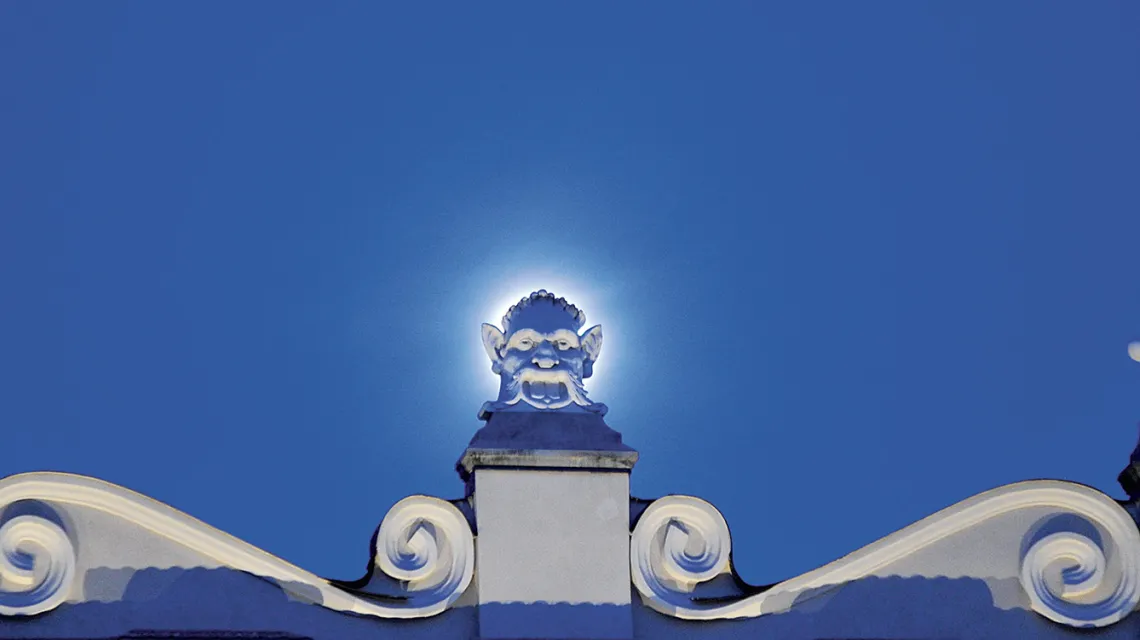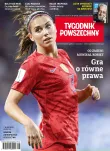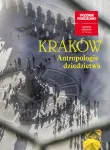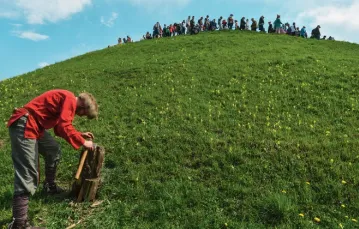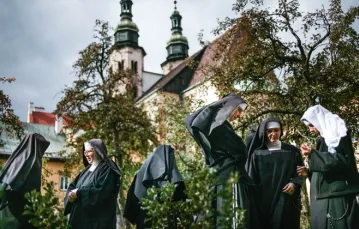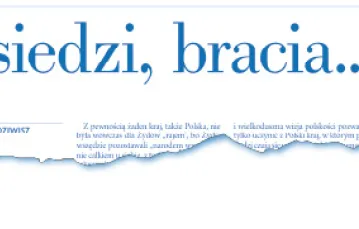Wykupienie dostępu pozwoli Ci czytać artykuły wysokiej jakości i wspierać niezależne dziennikarstwo w wymagających dla wydawców czasach. Rośnij z nami! Pełna oferta →
The autumn of 1978 witnessed two events that would prove of great importance for Krakow. Although both took place far away from the city, they had a powerful impact on its future, and today are the basis of two popular associations: Kraków – "the city of human heritage", but also "the city of the Polish Pope". They are also a good starting point for a discussion about the dimensions and meaning of "Kraków's heritage".
Renewal of the City
At the UNESCO Committee meeting in Washington DC in September 1978, the historic centre of Krakow was entered onto the first UNESCO World Heritage List. A month later, in the Vatican, Archbishop Karol Wojtyla of Kraków was proclaimed Pope. The Kraków press reported on the election of "the first non-Italian pope in 455 years". Biographical sketches of Wojtyła and extensive information about the conclave were published. On the first page of the Dziennik Polski daily, the sensational news from Rome was printed side-by-side with reports on "the state's commitment to improving the supply of milk, meat and their derivative products" and other such important news. Nevertheless, when one reads the official press materials from October 1978, the gravitas of the event remains striking even today.
What is surprising, however, is how few column inches were devoted to the UNESCO decision. The newspapers from September 1978 were essentially silent about it, but at the same time they promoted local activities to save Kraków's historic monuments, and it was no accident that these began in the year the city was entered onto the UNESCO list. Inspired by the writer Iwaszkiewicz’s exhortation – “Let's love Kraków more than Venice!”, the artists of Krakow's Musical Theatre began a public fundraising campaign to renovate the historic centre. Actors from local theatres, musicians, dancers, but also scouts and cubs, collectives, staff from various workplaces and cooperatives, as well as students and student organisations, tried to outdo each other in organising collections and cultural events in aid of the city’s renewal.
Soon the disastrous condition of the city's historic monuments became a matter of national concern. In December, under the aegis of the central authorities, the Social Committee for the Renovation of Kraków's Monuments was established in the city. Meanwhile, the government and the communist party disseminated the slogan: “Renewing Krakow's monuments: a task for the whole nation!”. At a time when the UNESCO List brand was only just being established, and its internationalism appeared exotic from the Kraków perspective, Henryk Jabłoński, Chairman of the Council of State, reminded everyone that “Kraków is something special, something unique; it occupies a special place in the history of the nation”.
Monuments and Ideas
By juxtaposing those two events from the autumn of 1978, and comparing their evolution and reception as well as their impact on present-day Kraków, we can learn a lot about the category of heritage itself. Today, the comprehensive renovation and conservation of Krakow's monuments has become a fact, and the city is being promoted as part of the “heritage of humanity”, entered on UNESCO’s list. The glossy tourist brochures are full of restored tenement houses and churches, Wawel Cathedral and Castle, and the synagogues and streets of the old Jewish quarter of Kazimierz...
Yet, buildings and architecture are not everything. Monuments – devoid of memory, emotion, cultural practices and socially-constructed meanings – can easily turn into lifeless ornaments. It is no accident that researchers of heritage are more and more willing to examine its sociological and anthropological dimensions. They point to the multi-layered, ideological, contextual and process-based character of what is regarded as heritage. In his latest book, City and Politics. The Case of Kraków, Jacek Purchla, a heritage researcher and chair of the Polish National Commission for UNESCO, notes that “heritage is not just material cultural goods, but also our memory, choices, and identity”. In the interview he adds that heritage is nowadays framed as a process of “continuous reinterpretation of the past”. Our thinking has moved on from the UNESCO Convention of 1972, when heritage was understood statically – as buildings and monuments in need of protection. Nowadays, heritage is first and foremost the idea of using the past for the purposes of the future. As Purchla points out, “the concept of cultural heritage reflects both the attitude of society towards the world of values and the process by which values are reinterpreted”.
Following the British anthropologist Sharon Macdonald, we could add that heritage is “stories that people tell themselves about their pasts, and that they aim to also preserve into the future”. These stories are expressed in the form of buildings, monuments, museum collections or well-designed tourist routes and urban spaces. The material forms of memory conceal historical and social dynamics, however, and it these that determine the inner life of heritage and the strength of its impact (or absence thereof).
The Most Important Window
It may be instructive to take a closer look at how the perception of Kraków as a papal city has emerged. When, during ethnographic research carried out a few years ago, one Cracovian told me that “our heritage is the Pope”, I realised that as a researcher I was an eyewitness not only to the development of a modern religious cult, but also to the multifaceted creation of the city’s heritage. For sure, the attempt to build an image of Kraków as a papal city is an excellent case study in the field of patrimonialisation. The Papal character of Kraków, initiated by a conclave more than forty years ago, decisively entered the city’s mythology and urban space at the time John Paul II’s death. In anthropological terms, the window on the first floor of the Bishop’s Palace became the most important point of interest. As a place known for the semi-formal meetings that took place there between the Kraków public and John Paul II during his pilgrimages, the papal window only really earned this epithet in the final days of his life and after his death. The crowd that held vigil here for several days, and its – largely spontaneous – actions, created a new space for the papal cult.
Unlike other, similar ephemeral memorial sites (such as those in Warsaw, for example, which the anthropologist Ewa Klekot has written about), the Kraków window has become a permanent feature of the city’s mythical geography. Since April 2005, city tours have deviated from the Royal Route to stop by the Curia; here, tourists drive up in their electric sightseeing carts, while pilgrims come to light candles and leave flowers or even photographs and handwritten cards on the square opposite the window. Local inhabitants have mixed feelings about the increasing institutionalisation of the window in recent years. The renovation of the Curia building and the replacement of its windows in 2006 raised concerns about whether the original window would be preserved, while the replacement last year of a portable image of the Pope with a permanent and expensive mosaic bearing his portrait led to protests. A group of city guides gathered outside Curia shouting “Open the window!”. They pointed to the fact that the mosaic embedded in the place where the window used to be contradicted the idea of openness that the place had once evoked.
It is no coincidence that it is precisely at this spot – and not by any other papal monument, of which there are countless examples in Kraków – that pickets have been organised in recent times to oppose the Church’s attitude towardssex abuse scandals, and for several years the March of Atheists and Agnostics (nowadays rebranded as the March of Secularism) would pass by the Curia building and Papal window, which was interpreted as an expression of protest against the ubiquity of religion in public space.
Sacred Geographies
In Kraków, a city described in both popular discourse and on the local government website as “magical”, disputes about the presence of the sacred (sacrum) in public spaces, questions about the boundaries between the holy and the secular, and ideas about commemoration and the relationship between heritage-building and various religious traditions are constantly recurring themes. After all, the city – known as the “Second Rome” – has attracted Christian pilgrims for centuries. Indeed, it could be said that those pilgrims, wandering around Kraków in the footsteps of local saints and visiting the local places of worship, were the first tourists. The oldest Polish guide book, the first edition of which appeared in Kraków in 1603, tells readers that “the city offers the greatest inducements for still more fervent worship and godliness”.
Pilgrims were urged to visit the cathedral and the city’s churches, at the altars of which one could admire many religious “gems” – miraculous paintings and relics of “holy saints who stayed here and whose bodies are now laid to rest”. Aside from religious cults dating back to the early Middle Ages, in which the leading figure was Bishop Stanisław of Kraków, the 15th century was of special significance for the city’s development as a centre of pilgrimage. Dubbed “Kraków’s happy age” (Felix saeculum Cracoviae), it witnessed the burgeoning cult of six new local saints, who became inscribed in the sacred geography of old Kraków (Jan Kanty, Michał Giedroyć, Świętosław) and the districts of Stradom (Szymon of Lipnica) and Kazimierz (Stanisław Kazimierczyk, Izajasz Boner). The flourishing of Kraków’s religious functions went hand in hand with its emergence as a political, multi-ethnic and multicultural capital and economic centre of the region. However, the end of the 15th century was marked by an ignominious event: anti-Jewish unrest led to the resettlement of the Jewish population from the vicinity of the Market Square to the Jewish Town in the eastern part of Kazimierz. One hundred years later, similar events would befall the Protestant community: its church on St John Street was set on fire, and the Protestant parish was moved out of city for more than two centuries.
Today, in debates on the sacred geography of Kraków, the question of memory (or the lack of it) of the city’s multicultural and multireligious heritage is a recurring theme. After all, it is precisely that memory, or its absence, which reflects present-day ideas and shapes how Krakow's religious heritage is seen. Sometimes the participants of those debates point to the symbolic return of the Protestant congregation to Kraków in the era of the Free City (1815-46), the development and diversification of the Jewish community in the 19th and 20th centuries, whose presence was visible in many parts of the city, and the activities of Christian communities and their complicated fortunes, often reflected in the history of the buildings in which they prayed for decades or even centuries.
Sacred geographies seem to create a multi-layered narrative about space, an urban palimpsest recorded by successive generations, reaching deep into the past and touching upon various events in the city’s history – those joyous events, but also tragic ones that leave behind a “difficult legacy”. Nowadays, Orthodox Christians pray in a former Jewish house of prayer; the Greek Catholic church was originally used by the Norbertine Sisters, before changing hands twice; Lutherans and Calvinists occupy a temple originally built for the Order of Discalced Carmelites that was offered to them as compensation for past wrongs. The newer religious communities whose seats and places of worship are part of the city’s sacred landscape include Christian churches of various denominations, Muslims, practitioners of modern Slavic Paganism, Buddhists, Hindus, and also adherents of the “Wawel Chakra”. In the district of Kazimierz, beside the Jewish Religious Community, a Jewish Community Centre, new Jewish associations and institutions, and other Jewish religious communities have appeared in recent years. Some even speak of a “revival of Jewish life in Kraków after the Holocaust”.
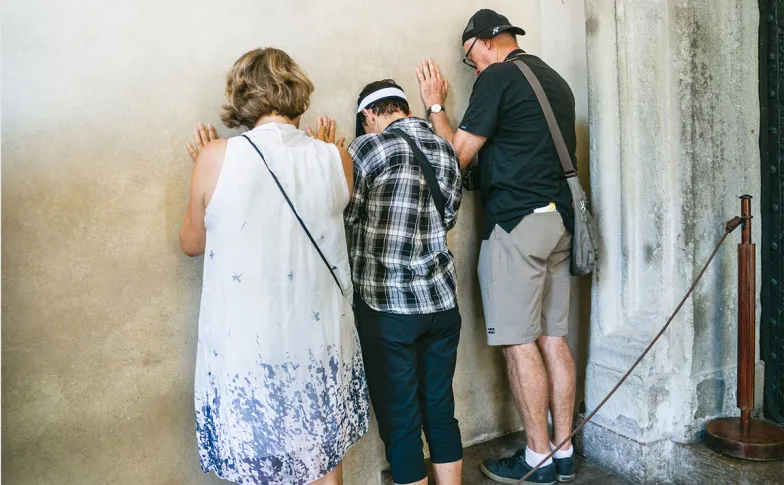
The Many Faces of Heritage
The diversity of heritage, which in practice means the coexistence of its various forms alongside memories and images of the past and different visions of the future, is a great creative resource. In addition to the multiplicity of religious traditions, Krakow's heritage evokes references to national myths, the history of this former capital city and its royal legacy, as well as the idea of Galician identity and the vision of “Middle Europe”. There are also a number of other layers and discourses which at different times break through and enter the wider debate – one could mention here the recently discovered “heritage of Nowa Huta” or the recently described “ecobiography of Kraków”, which focuses on nature understood as an important element of social history. According to Jacek Purchla, it is precisely “the attractiveness of Kraków’s heritage that still distinguishes it from other provincial capitals and places it among the metropolitan cities".
Heritage can become a burden, however – an object of intense commercialisation, a commodity for tourists. Kraków's Kazimierz district is already sometimes referred to as the “Jewish Disneyland”. If the vision of diversity is built on a paradigm of hierarchical pluralism (a term I have borrowed from the anthropologist Agnieszka Pasieka), it will be difficult to speak of partnership or dialogue among different heritages. Indeed, it will lead to the emergence of the “other”, rather then a fully-fledged member of a diverse community. Although perhaps intriguing, from the perspective of the majority (placed on a pedestal and seen as the norm), that “other” will be defined precisely in terms of their diference and strangeness. In this situation, the “other’s” heritage easily becomes an object of exoticism, an element of tourist folklore, a curious phenomenon or a saleable attraction.
This process particularly affects Jewish heritage, not only in Poland but throughout Europe, and especially in our part of Europe. As in Kraków, the former Jewish districts of Bucharest, Prague, and Budapest, once deserted and in ruin, have now become the most attractive entertainment districts, dotted with pubs and fashionable clubs. This is surprising if we realise that it takes barely an hour to travel from Kraków's Kazimierz to the former concentration camp of Auschwitz-Birkenau! Even closer – a few minutes’ journey by sightseeing cart – are Schindler's Factory and the Kraków Ghetto.
However, this is not about being grimly serious and abandoning the Kazimierz pub. We should remember that dark chapters of history are also subject to trivialisation, simplification, and commercialisation. A separate field of study has even emerged within academia which looks at dark heritage and the dark tourism that accompanies it. After all, the “sight of the pain of others” – to which Susan Sontag devoted her final work – simultaneously shocks and attracts. The suffering of others, and even more so of “strangers” – seen from afar, but also from a cultural and temporal distance – can easily become attractive and trivialised. So this is mainly to do with ethical questions. These are questions about the potential for, but also the limits of, human empathy; about intelligently approaching testimonies of the past; about maturely going beyond simplistic notions of otherness and accepting the existence of a polyphony of discourses and a diversity of heritage. “The truth about the place in which we live cannot be seen through closed doors and windows,” Janusz Makuch reminded during the last Jewish Culture Festival. He invited us to the Meeting Tent set up in Kazimierz – a space between moving and staying, between roaming and remaining. Such an approach, which is also open to the creation of new visions of the future, is not made easier by an attitude of hierarchical pluralism nor, in particular, by an attitude based on the worship of a monolithic and heroic vision of national history.
Wawel – That which Divides Us
Meanwhile, if we agree that heritage is primarily a process, and that in the historic city’s multi-layered space it can take many forms and have many faces, it becomes a wonderful social and cultural tool for expressing oneself, creating ideas, and negotiating meanings. However, the potential of heritage can be easily squandered, for instance when it is used for short-term political ends.
It is hard to find a better example of this than Wawel Hill, which, as Jacek Purchla writes, can nowadays be said to have a “troublesome legacy”. He explains that “since the Smolensk air disaster, Wawel – ‘the holy mountain of the Poles’ – has become something which divides rather than unites us”. One may assume that the act of burying the presidential couple alongside kings, bishops, national bards and heroes, and the monthly ceremonies which have been taking place for several years now by the couple’s tomb on Wawel, have, at least for some people, become an effective means of entrenching a vision of monolithic, sacralised national heritage.
What is more, this heritage is a fundamental part of the particular historical policy promoted by the present government. It is the advocates of this vision who see the new Wawel sarcophagus as a material continuation of national heritage and the embodiment of a political myth, and they treat visits to the crypt beneath the Silver Tower as a modern continuation of the 19th-century tradition of patriotic pilgrimages to Wawel Hill. At the same time, for many tourists from Poland and around the world, a photo of the sarcophagus (or even a selfie with the sarcophagus in the background) has become a souvenir of their trip to Kraków.
It is also true, however, that during the course of ethnographic research on the perception of Krakow's heritage, I met Cracovians and visitors alike who, since 2010, have given Wawel Hill, or at least the crypt beneath the Silver Tower, a wide berth. Some people speak in no uncertain terms about the “profanation of Wawel”, and the protests that began before the Kraków burial and which continue to this day show that not just heritage, but also the spaces that constitute it, can be appropriated, turning places that build community identity into hotspots of division and conflict.
What Kraków’s heritage laboratory teaches us today is that memory and the references to the past which shape it are dynamic phenomena with many different trajectories, initiated by various groups of people who are the co-creators of the city. Heritage is formed through spontaneous, bottom-up activities as well as through as institutional, top-down solutions. It reveals its power to sacralise the past, but also its political dimension and its commercial potential. It has the ability to forge a bond based on the coexistence of different identities within the community of a shared place. It can also be a source of conflicts of memory and, consequently, different visions of the present and of future projects; and thus different visions of the way urban space is formed and experienced. ©
DR HAB. ANNA NIEDŹWIEDŹ is principal investigator coordinating the Polish team within the international HERILIGION consortium. She is a cultural anthropologist and lectures as a professor at the Jagiellonian University’s Institute of Ethnology and Cultural Anthropology. She is the author of, among others, books on Catholicism in Ghana and Poland.
KRAKÓW. ANTROPOLOGIE DZIEDZICTWA – CZYTAJ CAŁY DODATEK SPECJALNY >>>
KRAKOW. ANTHROPOLOGIES OF HERITAGE – READ MORE IN ENGLISH >>>

